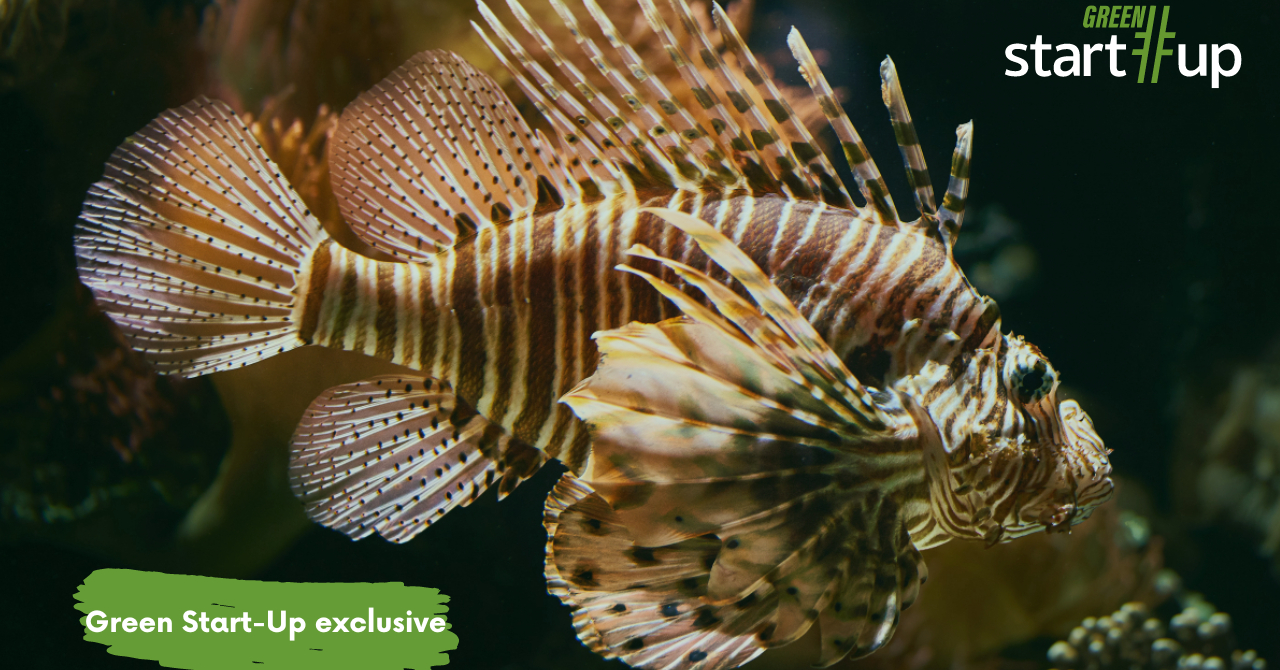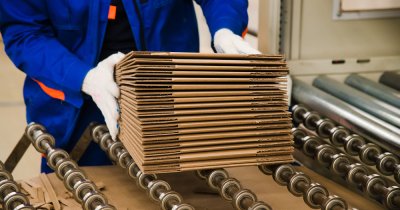I was quite intrigued when I first heard about Inversa's efforts, as I wasn't aware that fish skin can be used as a leather alternative.
I found out during an interview for Green Start-Up with Aarav Chavda, co-founder and CEO of the company, that it can be an even better solution for certain applications than bovine leather, for example.
First of all, lionfish can be very damaging as an invasive species, as it doesn't have natural predators outside its native waters of the Indian and the Pacific Oceans.
This species has seen significant increases in its population in the Caribbean Sea, around Mexico and even in the Mediterranean Sea, which disturbed the local ecosystems.
Tamworth Distilling is another company that catches invasive species, the European green crab, and adds it to its whiskey products for a unique flavor, protecting the American East Coast ecosystems in the process.

Inversa's team is made of nine people, six of which work full time for the project and right now, according to Aarav, "we're purely focusing on the lionfish and our next species, the dragon fin."
Dragon fin is another invasive species that was brought to America from Asia and while the new species was originally introduced to manage ponds, flooding in the 1990s allowed it to reach the Mississippi River.
Since then, dragon fin outcompeted other native species and its appearance degraded the quality of the water, due to the fact that it was killing essential organisms.
Catching invasive species, a necessity for the ecosystems
Aarav happens to be a long-time scuba diver and during his explorations in the Atlantic and the Mediterranean, among other places, he noticed the issue posed by the lionfish and the effects this species has on territories where it doesn't belong naturally.
"Any scuba diver who dove in the Atlantic and the Mediterranean knows about the lionfish and knows how destructive it can be and when I say destructive I mean absolutely catastrophic for the coral reefs", the CEO of Inversa shared with us.
"And so just witnessing that decline and witnessing the death of the thing I really enjoy was really a strong motivator to do something", he added.
After some failed attempts from governments and even non-profits, Aarav realized that consumers needed to be involved in the matter somehow so that things could change for good.
So, the company decided to give them an alternative, both when it comes to leather for fashion products, but also when it comes to seafood delicacies.

After the lionfish is stripped of its spikes and cleaned properly, it can be cooked and served as most fish out there that are already part of our menu, so this species can actually have multiple applications.
Aarav explained that "the fillets and the collar actually get served at restaurants through our sister company, Salatino Seafood, and it's this delicate, delicious flaky white fish. That gets served at restaurants all around the world and obviously, the skin we use for leather."
"The rest of the fish itself actually gets used, none of it is thrown away, the rest gets turned into oils and then we turn the rest into bait so it all ends up getting used or like recycled back into the broader ecosystem", Aarav added.
The challenge of dealing with the invasive lionfish
When it comes to the challenges Inversa faces in its mission to re-establish the order in the damaged ecosystems, one of them is the fact that there aren't enough fishermen and divers to address the problem created by lionfish, as the species is rapidly reproducing and is reaching alarming numbers.
Inversa's CEO told Green Start-Up that "the hardest part is the supply chain. The unfortunate reality is that there's millions and millions, maybe even billions of lionfish out in the Atlantic at this point, but there's not enough infrastructure to be removing them on a regular cadence."
"Coming into new geographies, announcing that "hey, this thing is destroying your coral reefs that no one would buy, we're now buying it", thus helping the diving communities and fishermen make a good living off of targeting this thing, that takes time", Aarav went on to explain.

This way, Inversa gives local communities an opportunity to deal with the problem, while earning something in return, as until now, the invasive species didn't have any commercial applications, so no company was interested to buy it.
High quality products made from fish-based leather
The lionfish Inversa receives from divers and fishermen eventually get turned into this leather alternative for products such as shoes, wallets, bags and clutches.
So there is a wide range of products that the innovative alternative can be applied to, due to its resistance, but also its flexibility.
One of the companies the Inversa team collaborates with is Teton Leather Company, an exotic American leather brand, and Aarav told us that the lionfish skin "is highly manufacturable and that's largely because the matrix of the lionfish skin is really tight, so it's really strong and on top of that, it's very fluid and it works like leather, it feels like leather, it stretches like leather and it's very thin."
"One of the biggest compliments we've ever received was using the lionfish leather as the inside of a card buckle of a wallet, because that's a very high durability application, you've got cards going in and out, it has to stretch and un-stretch continuously", the co-founder of Inversa told us.
One of the company's goals is expanding its services, as the team is "currently working on a couple of different projects" in order to address the problems generated by other invasive species, such as the dragon fin.
A project started with personal financing
Aarav told us that "the initial team basically bootstrapped this" and Inversa recently closed an investment deal, although we didn't receive any information on the amount.

Funding such a project is important, both for protecting natural environments, but also to offer people an alternative that can really work and replace bovine-based leathers.
What do customers think: ”new and different”
We found from Aarav that Inversa's fish-based leather products are received by customers "with a lot of shock and surprise, everyone thinks it's going to smell like fish and it just smells like leather and everyone is surprised by that. Even when we first started doing this we were like "oh my God, this is amazing, it doesn't smell like fish, this is incredible."
"Everyone is very excited about the strength, we receive calls from exotic manufacturers who are blown away by how something so thin is so strong and manufacturable and breathable", he added.
Inversa's CEO is confident that more people will be interested in the new product proposition, as they are "always looking for something new and different", especially with the fashion industry's move towards a more sustainable industry.
"I think that ultimately, what's driving it is the consumer, the consumer is demanding more and better from their brands", we were told.
Restoring the natural balance of marine ecosystems
The good news on the lionfish problem and others generated by invasive species in general is the fact that these ecosystems can recover after they get removed, but experts will need to keep an eye out for them, since they might re-appear at some point.

Green Start-Up learned from Aarav that "if you remove lionfish the coral reefs come back to life, the color comes back and when the color comes back, the color is basically a signal to native populations that it is a healthy, safe, good place to live, so the color comes back, all the reef fish come back."
"The catch, though, is that it is not about removing them one time, it's about taking care of the local areas as much as possible, so the divers know that they have to go back, they have to look for lionfish, basically pulling the weeds, keep taking care of it", he continued.
Inversa's goals for the rest of the year
Besides looking into what other invasive species the company can try to catch to help more ecosystems, Inversa is also looking at expanding its list of partners for new products and to spread awareness about why it is important to keep ecosystems healthy and free of invaders.
"We would like to get a little bit deeper into our next species that we are looking into and work with some new partners and help them bring more awareness and attention to the problem. These are new brands that we're working with, so we're excited to expand the scope of who we're working with."
 Mihai - Cristian Ioniță
Mihai - Cristian Ioniță












Any thoughts?